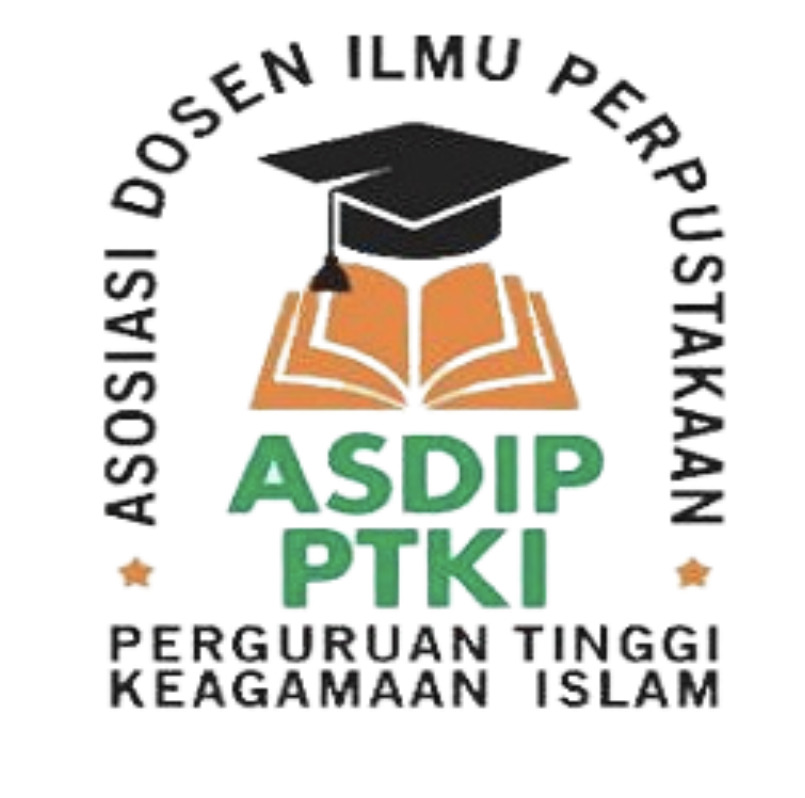Konsep Model Formulasi Rasio Kebutuhan Bahan Perpustakaan (Analisis Kuantitatif Kebutuhan Bahan Perpustakaan Sekolah Tinggi Agama Islam Negeri Curup Tahun 2017)
DOI:
https://doi.org/10.29240/tik.v2i2.548Keywords:
Pengembangan koleksi, Koleksi perpustakaan, Kebutuhan pemustakaAbstract
Downloads
References
Alsa, A. (2004). Pendekatan kuantitatif kualitatif dalam penelitian psikologi. Yogyakarta: Pustaka Pelajar.
Barner, K., & Tal, S. (2012, 6 12). SFX, information needs, the Academic Library, and its User. Library Philosophy and Practice, hal. 754.
Casserly, M. F. (2008). Research in Academic Library Collection Management. University Libraries Fakulty Scholarship, hal. 82-137.
Evan, G. E. (2000). Developing library and information center collection. Westport: Greenwood of Publishing.
Hadi, S. (1985). Metodologi research jilid 4. Yogyakarta: Yayasan Penerbit Fakultas Psikologi UGM.
Harbo, K., & Hansen, T. V. (2012, 4 11). Getting to know library users' needs - experimental ways to user-centred library innovation. LIBER Quarterly, hal. 367-385.
Kim, M. (2000). A Study on the Remote Library Users: Needs of Library Services and Preferences. College of William and Mary, hal. 61-76.
Mardalis. (2008). Metode penelitian suatu pendekatan proposal. Jakarta: Bumi Aksara.
Moyo, L. M., & Cahoy, E. S. (2003, 7 6). Meeting the needs of remote library users. Library Management, hal. 281-290.
Nawawi, H. (1983). Metode penelitian bidang sosial. Yogyakarta: Gadjah Mada University Press.
Qasim, M. (2013, Mei 9). Pengantar Kearsipan. Dipetik Februari 24, 2017, dari Badan Perpustakaan dan Arsip Daerah Istimewa Yogyakarta: http://bpadjogja.info/file/1d938b00eb7dff2f6d201167affc9b36.pdf.
Rizal, A. (2012, Agustus 22). Merancang Analisis Kebutuhan. Dipetik Februari 24, 2017, dari Slide Share: https://www.slideshare.net/andyrizal/merancang-analisis-kebutuhan
Rufaidah, V. W., Maksum, & Suryantini, H. (2011, September 5). Analisis kebutuhan jurnal inti (Core Journal) Peneliti Badan Litbang Pertanian. Jurnal Perpustakaan Pertanian, hal. 70-77.
Setiawan, E. (2012). Rasio. Dipetik Februari 24, 2017, dari Kamus Besar Bahasa Indonesia: http://kbbi.web.id/rasio
Setiawan, E. (2017). Dipetik 2 23, 2018, dari Kamus Besar Bahasa Indonesia: https://kbbi.web.id/formulasi
Shenton, H. (2003). Life Cycle Collection Management. Liber Quarterly, hal. 254-272.
Solot, S. (2016). Analisis kebutuhan pemustaka dan ketersediaan koleksi bahan pustaka di perpustakaan Universitas Indonesia Timur. Makasar: Fakultas Adab dan Humaniora UIN Alauddin.
Sulistyo-Basuki. (1993). Pengantar Ilmu Perpustakaan. Jakarta: Gramedia Pustaka Utama.
Tal, K. B. (2012, 6 12). SFX, information needs, the Academic Library, and its User. Library Philosophy and Practice, hal. 754.
Wikipedia. (2015, Maret 25). Formulasi. Dipetik Februari 24, 2017, dari Wikipedia: https://ms.wikipedia.org/wiki/Formulasi
Wikipedia. (2017, April 20). Model. Dipetik Mei 7, 2017, dari Wikipedia: https://id.wikipedia.org/wiki/Model
Young, H. (1983). The ALA glossary of library and information science. Chicago: American Library Association.
Yulia, Y., & Sujana, J. G. (2009). Pengembangan Koleksi. Jakarta: Universitas Terbuka.
Zuriah, N. (2006). Metodologi penelitian sosial dan pendidikan: teori dan aplikasi. Jakarta: Bumi Aksara.
Peraturan Kepala Perpustakaan Nasional Republik Indonesia Nomor 13 Tahun 2017 Tentang Standar Nasional Perpustakaan Perguruan Tinggi
Peraturan Pemerintah Republik Indonesia Nomor 24 Tahun 2014 Tentang Pelaksanaan Undang-Undang Nomor 43 Tahun 2007 Tentang Perpustakaan
Undang-Undang Republik Indonesia Nomor 43 Tahun 2007 Tentang Perpustakaan
Downloads
Published
Issue
Section
Citation Check
License
Authors who publish with Tik Ilmeu : Jurnal Ilmu Perpustakaan dan Informasi agree to the following terms:
- Authors retain copyright and grant the journal right of first publication with the work simultaneously licensed under a Creative Commons Attribution-NonCommercial-ShareAlike 4.0 International License (CC BY-NC-SA 4.0) that allows others to share the work with an acknowledgment of the work's authorship and initial publication in this journal.
- Authors are able to enter into separate, additional contractual arrangements for the non-exclusive distribution of the journal's published version of the work (e.g., post it to an institutional repository or publish it in a book), with an acknowledgment of its initial publication in this journal.
- Authors are permitted and encouraged to post their work online (e.g., in institutional repositories or on their website) prior to and during the submission process, as it can lead to productive exchanges, as well as earlier and greater citation of published work (See The Effect of Open Access).







 This work is licensed under a
This work is licensed under a 